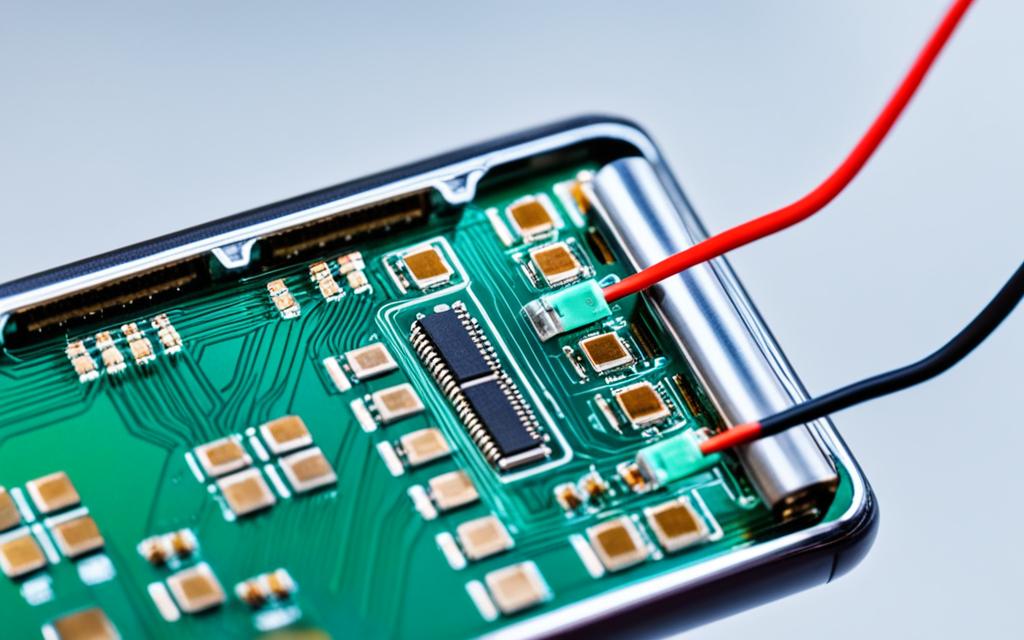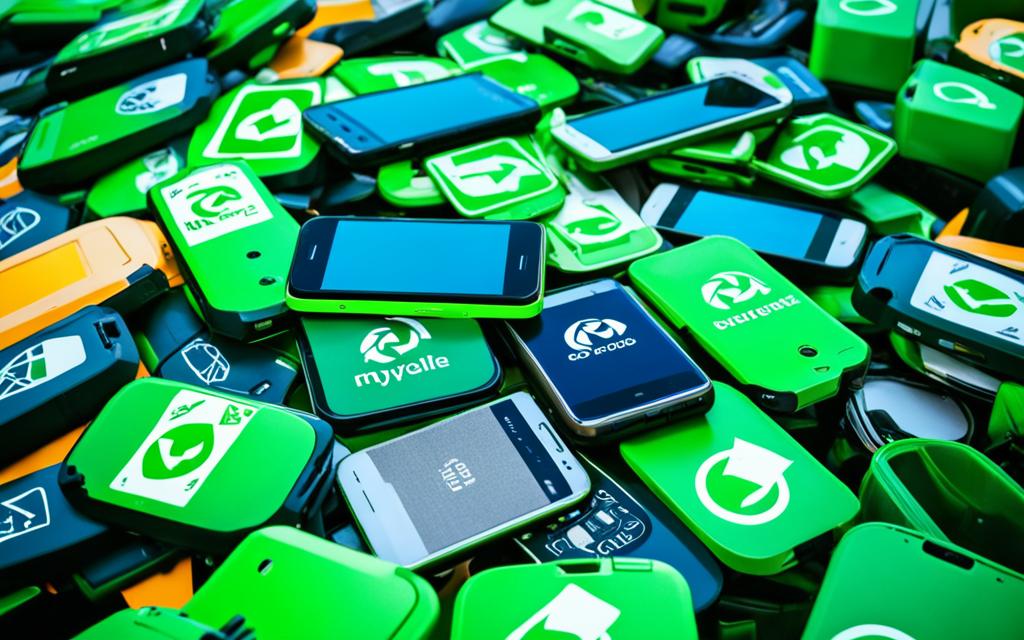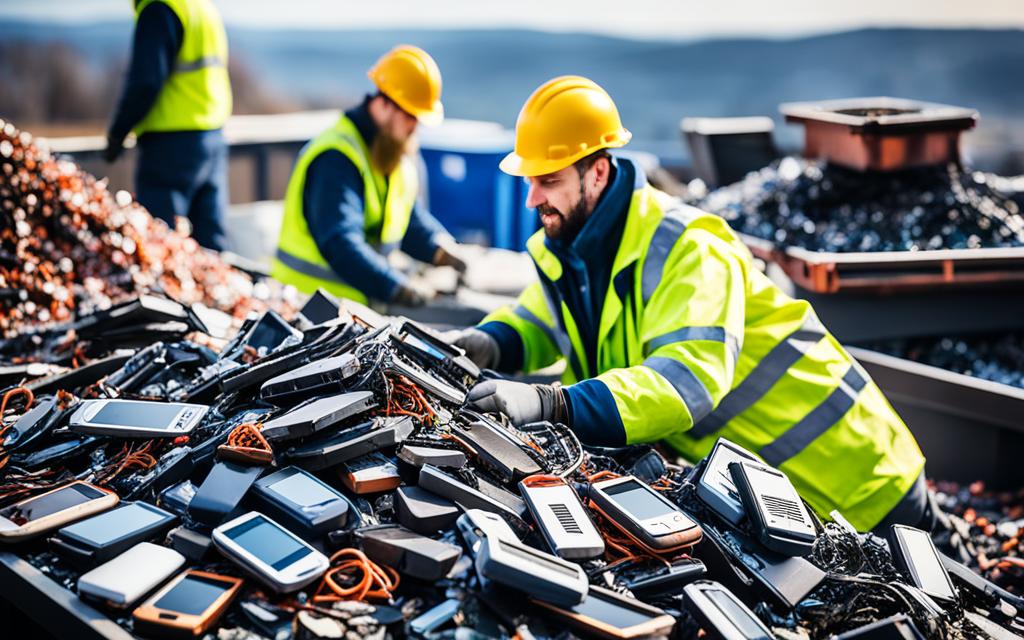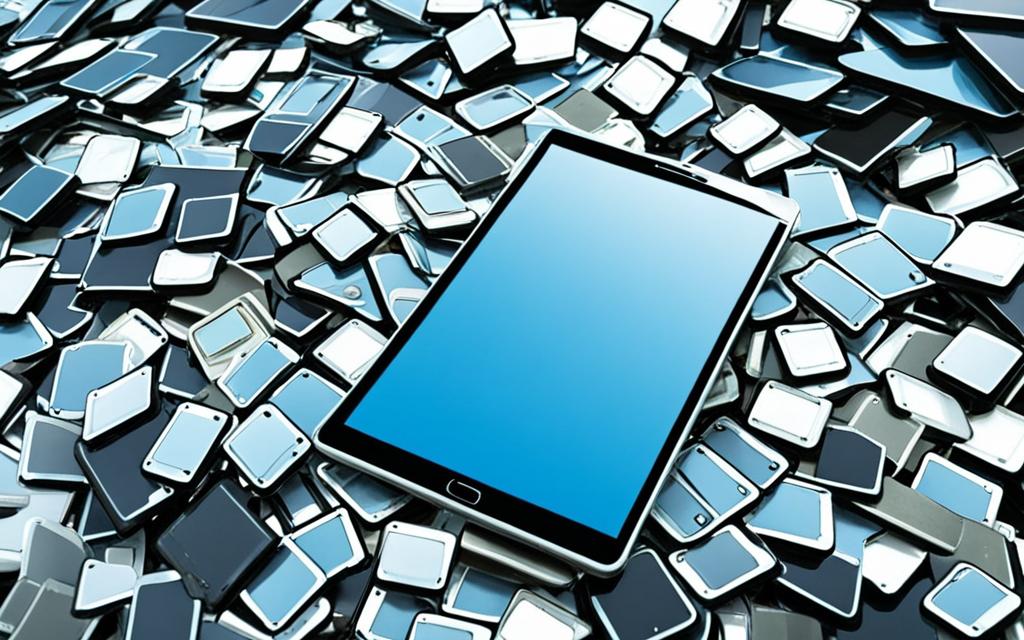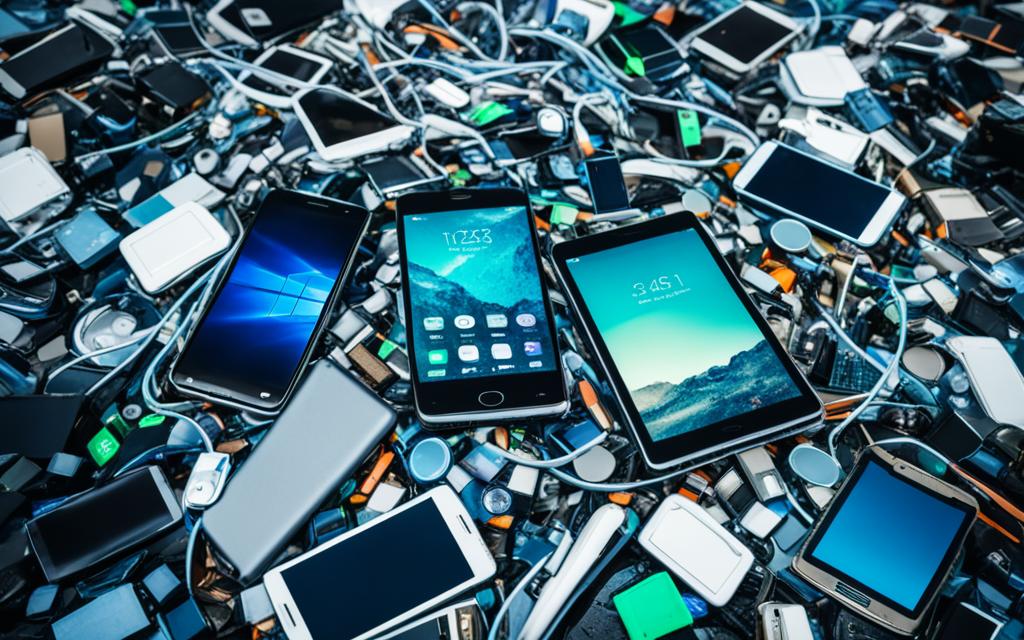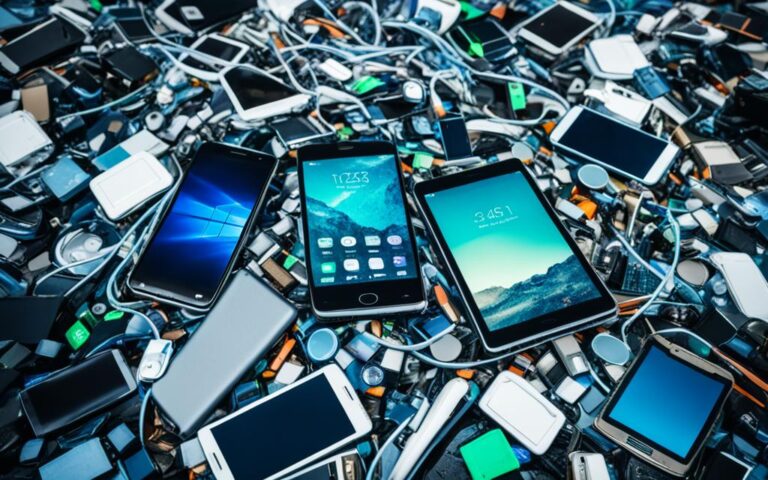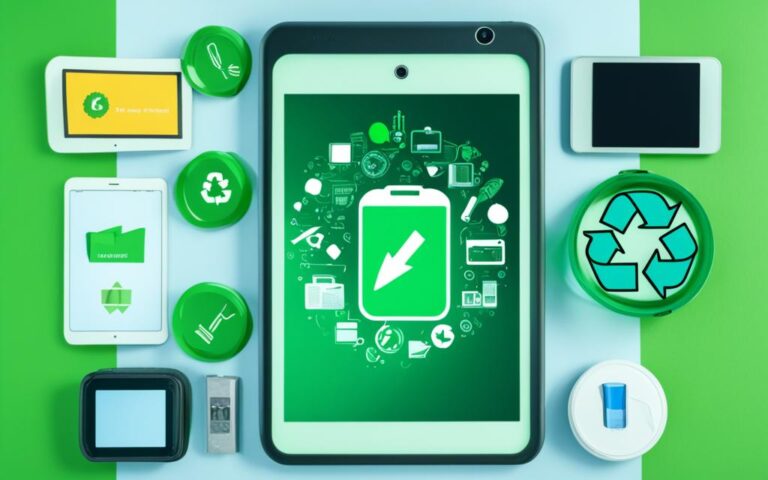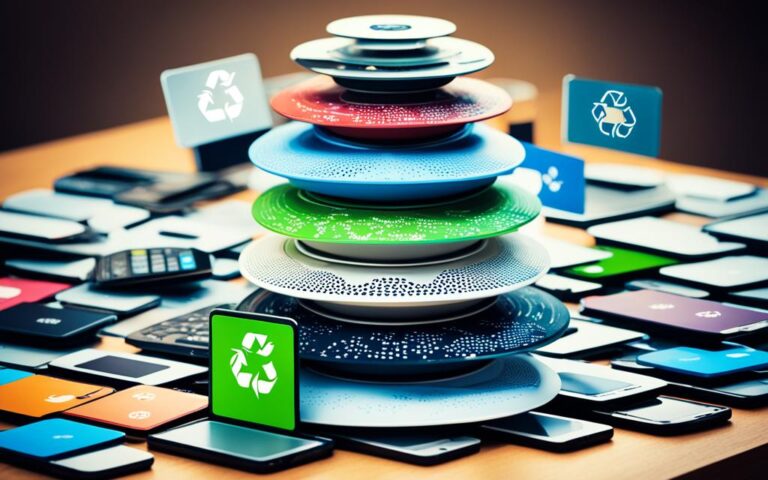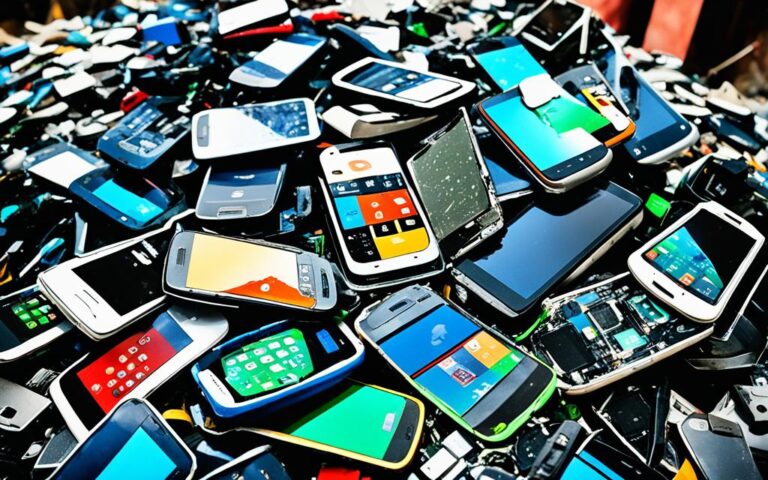Materials Recovered from Recycled Tablets and Their Uses
When electronic devices like cell phones, tablets, and laptops reach the end of their lifespan, it is important to consider their environmental impact and the potential for recycling. These devices contain valuable materials such as lithium, cobalt, nickel, glass, metals like copper, gold, and silver, plastics, and even rare earth metals. These materials can be broken down, recycled, and repurposed for future devices, reducing electronic waste and contributing to a more sustainable future for the electronics industry.
Recycled tablets offer a wealth of valuable resources that can be harnessed for sustainable applications. By recycling tablets, we can extract these materials and give them a new lease of life. These resources can then be utilized in the production of new electronic devices, reducing the need for virgin materials and minimizing our environmental impact.
From the recovery of precious metals to the repurposing of plastics and the recycling of rare earth elements, the reuse of materials from recycled tablets has a significant impact on the sustainability of our electronics industry.
Join us as we explore the world of tablet recycling and discover the valuable resources that can be extracted from recycled tablets. Together, let’s pave the way towards a more sustainable future.
The Recycling Process for Electronic Devices
Recycling electronic devices plays a crucial role in reducing electronic waste and promoting a sustainable future. The process of electronic device recycling involves multiple steps that ensure the safe disposal of old devices and the recovery of valuable materials for future use.
Firstly, the process begins with the collection of electronic devices from various sources such as individuals, businesses, and recycling centers. These devices are then transported to specialized recycling facilities where they undergo a series of steps.
The first step is sorting, where the devices are categorized based on their type, brand, and condition. This allows for efficient processing and ensures that each device receives the appropriate recycling treatment.
Next, the devices are carefully dismantled, separating their components to facilitate material recovery. Batteries, screens, circuit boards, and plastics are separated and processed individually for optimal recycling.
Some devices may go through a shredding process to break them down into smaller pieces, making it easier to extract valuable materials. Shredding also helps to ensure the complete destruction of any sensitive data that may still be stored on the devices.
The next step involves the recovery of materials from the shredded or disassembled devices. Advanced techniques are used to sort and extract valuable materials such as metals, glass, and plastics. These materials are then processed to be used as raw materials in the manufacturing of new electronic components.
Finally, any components that cannot be recycled or repurposed are disposed of responsibly, following environmental regulations and guidelines. This ensures that even the non-recyclable parts of electronic devices are handled in a safe and sustainable manner.
The recycling process for electronic devices is a comprehensive and intricate procedure that maximizes material recovery and minimizes the environmental impact of electronic waste. By participating in electronic device recycling, individuals and businesses can actively contribute to a more sustainable electronic ecosystem.
How Recycling Repurposes—and Preserves—Our Resources
The recycling of electronic devices plays a vital role in conserving valuable resources and promoting sustainability. Through the recycling process, various materials such as metals, plastics, glass, batteries, and circuit boards are repurposed and transformed into raw materials for manufacturing new electronic components. This approach significantly reduces the need for extracting virgin resources and helps create a more sustainable and environmentally responsible electronics industry.
Recycled Materials
“By repurposing recycled materials, manufacturers contribute to a circular economy and minimize the impact on natural resources.”
One of the most significant advantages of electronic device recycling is the utilization of valuable metals. Gold, silver, copper, and rare earth elements found in old devices can be recovered and reused for manufacturing new components. This process not only conserves these finite resources but also reduces the environmental impact associated with mining and refining operations.
In addition to valuable metals, the recycling of electronic devices also focuses on recycled plastic. By reusing plastic materials recovered from old devices, manufacturers can reduce the demand for new plastic and minimize the carbon footprint associated with plastic production. Recycled plastic can be used to create casings and components for new devices, demonstrating the effectiveness of resource conservation and sustainable practices.
The recycling of electronic devices also presents opportunities for reusing glass. Rather than disposing of old screens, the glass can be melted down and repurposed for the production of new screens or other glass components. This innovative approach not only reduces waste but also highlights the value of recycling in preserving valuable materials and minimizing environmental impact.
Repurposed Batteries and Circuit Board Recycling
Another critical aspect of electronics recycling is the repurposing of batteries. Old batteries from electronic devices, when properly reconditioned, can be reused in less demanding applications. This not only extends their lifespan but also reduces the need for new battery production, which often involves resource-intensive processes. By repurposing batteries, electronic waste is effectively minimized, and resources are conserved.
Circuit boards, which contain valuable metals, are another key focus of recycling efforts. These boards can be refurbished or recycled to recover precious metals like gold and copper. Circuit board recycling not only conserves these valuable resources but also ensures that hazardous materials are properly handled and disposed of in an environmentally friendly manner.
Creating a Sustainable Future
“Through the repurposing and recycling of electronic devices, we can build a more sustainable and environmentally responsible electronics industry.”
The recycling process, with its focus on resource conservation and material repurposing, contributes to a sustainable future. By diverting electronic waste from landfills and repurposing valuable materials, manufacturers can significantly reduce their reliance on virgin resources. This approach helps minimize the environmental impact associated with resource extraction, promotes responsible e-waste management, and creates a more sustainable electronic ecosystem for generations to come.
| Recycled Materials | Benefits of Recycling |
|---|---|
| Metals (gold, silver, copper, rare earth elements) | – Conservation of finite resources – Reduction in mining and refining operations |
| Plastic | – Reduction in demand for new plastic materials – Minimization of carbon footprint |
| Glass | – Waste reduction – Preservation of valuable materials |
| Batteries | – Extension of battery lifespan – Reduction in new battery production |
| Circuit boards | – Recovery of precious metals – Proper disposal of hazardous materials |
The Global Impact of Electronics Recycling
Recycling electronic devices has a global significance due to the growing concern of e-waste and its impact on the environment and human health. Many countries have laws and regulations in place for responsible disposal and recycling of electronic devices, acknowledging the urgent need to address this issue. By recycling electronic devices, we can significantly reduce the amount of e-waste that ends up in landfills and contribute to a more sustainable electronic ecosystem.
One of the key benefits of electronics recycling is the reduction in carbon footprint compared to manufacturing new materials. When electronic devices are recycled, valuable resources such as metals, plastics, and glass can be recovered and reused, eliminating the need for the extraction and processing of virgin raw materials. This responsible resource management not only conserves our planet’s resources but also minimizes the environmental impact associated with mining, refining, and manufacturing processes.
Furthermore, electronics recycling initiatives foster a more sustainable future by encouraging the adoption of eco-friendly practices and raising awareness about the importance of responsible e-waste management. By responsibly disposing of our electronic devices, erasing personal data, and supporting recycling initiatives, we actively contribute to the preservation of the planet for future generations.
| Impact of Electronics Recycling | Benefits |
|---|---|
| Reduction in e-waste | Prevents hazardous materials from contaminating the environment |
| Resource conservation | Preserves valuable metals, plastics, glass, and rare earth elements |
| Carbon footprint reduction | Reduces energy consumption and greenhouse gas emissions |
| Stimulates the economy | Creates jobs in the recycling and refurbishing industries |
| Responsible e-waste management | Promotes environmentally friendly practices |
Quotes:
“Electronics recycling plays a crucial role in reducing e-waste and creating a sustainable electronic ecosystem.” – John Miller, Environmental Scientist
“By recycling electronic devices, we can significantly reduce the carbon footprint and conserve valuable resources for future generations.” – Sarah Thompson, Recycling Advocate
Conclusion
Recycling electronic devices is a responsible choice that has a significant impact on creating a more sustainable future. By understanding the materials that can be recovered from recycled tablets and other devices, we can actively participate in responsible e-waste management. This not only helps to conserve valuable resources but also reduces the environmental impact of electronic waste.
Supporting recycling initiatives and making eco-conscious choices play a crucial role in preserving the planet for future generations. It is important for individuals, businesses, and governments to take collective action in promoting responsible e-waste management and electronics recycling. By opting for recycling over disposal, we can reduce the carbon footprint associated with manufacturing new devices and contribute to a more sustainable electronic ecosystem.
To create a sustainable and environmentally responsible electronics industry, it is necessary for everyone to be mindful of their electronic consumption and disposal practices. By recycling electronic devices, we can minimize the extraction of raw materials and the generation of electronic waste. Together, let us embrace a future where recycling initiatives are supported, responsible e-waste management is practiced, and the planet is preserved for generations to come.
FAQ
What materials can be recovered from recycled tablets?
Recycled tablets contain valuable materials such as metals (gold, silver, copper, rare earth elements), plastics, glass, batteries, and circuit boards. These materials can be processed and repurposed for manufacturing new electronic components.
How does the recycling process for electronic devices work?
The recycling process for electronic devices involves several steps. First, the devices are collected from various sources. Then, they are sorted and dismantled, separating components like batteries, screens, circuit boards, and plastics. Some devices may go through a shredding process to break them into smaller pieces. Valuable materials like metals, glass, and plastics are recovered through various techniques. Components that can’t be recycled are disposed of responsibly.
What are the uses of the materials recovered from recycling?
The materials recovered from recycling electronic devices can be reused in various ways. Metals can be turned into raw materials for manufacturing new electronic components. Recycled plastic can be used in the production of casings and components, reducing the demand for new plastic materials. Glass from old screens can be melted down and used for new screens or other glass components. Batteries can be reconditioned and reused in less demanding applications. Circuit boards can be refurbished or recycled for their valuable metals.
Why does recycling electronic devices have a global impact?
Recycling electronic devices has a global significance due to the growing concern of electronic waste and its impact on the environment and human health. Many countries have laws and regulations in place for the responsible disposal and recycling of electronic devices. Recycling reduces the demand for raw materials, leading to a reduction in carbon footprint compared to manufacturing new materials.
How can I contribute to electronics recycling?
As a consumer, you can contribute to electronics recycling by responsibly disposing of your devices, erasing personal data, supporting eco-friendly manufacturers, and making sustainable choices. By doing so, you play a crucial role in the responsible management of e-waste and help create a more sustainable and environmentally responsible electronics industry.



